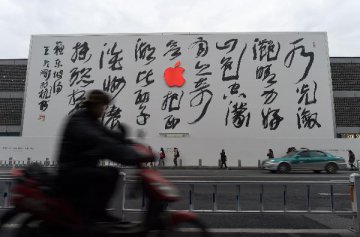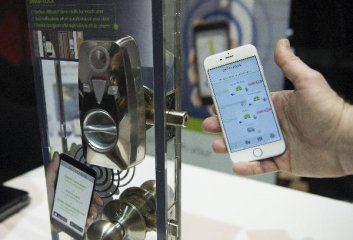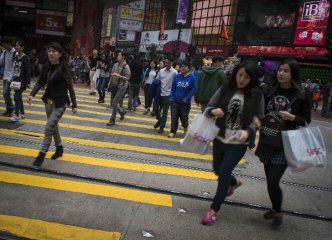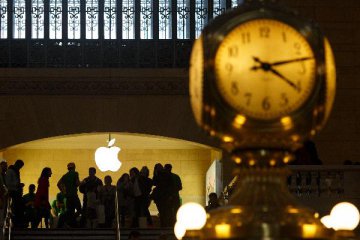
When Apple Inc. AAPL 0.62% said China’s slowing economy contributed to its late-year sales slump, the news rattled the stocks of other major U.S. companies with big operations in the world’s second-largest economy.
Now, as U.S. companies prepare to report their quarterly earnings, China’s impact will be revealed. The amount of damage is likely to depend on such factors as who the company’s customers are and how much competition it faces in China.
Take Starbucks Corp. and Nike Inc. The coffee chain, which faces relatively stiff competition in China, has warned of slow growth in the country, while the sneaker maker, which doesn’t, just reported big gains there. Some companies that are heavily exposed to the country, like chip maker Texas Instruments Inc., TXN 1.93% may prove less vulnerable because their customers are primarily Chinese manufacturers rather than consumers. Conversely, companies don’t have to sell directly to China to take a hit—makers of watches and other luxury products, for instance, rely on spending by Chinese tourists in Europe, Japan and the U.S.
China’s manufacturing sector has declined since late 2017 because of lower private-sector investment, and in the fourth quarter revenue growth slowed or stagnated in every sector, according to China Beige Book, which collects and analyzes data on China’s economy. Last year’s growth likely got a boost from a rush of orders by companies seeking to dodge new tariffs imposed as part of the U.S.-China trade dispute.
Retail sales growth slowed in November to the lowest level in 15 years, and Chinese consumers have begun putting off major purchases, recent data showed.
“Now we’re entering a worse time,” said Leland Miller, chief executive of research firm China Beige Book International. “The slowing economy and headwind from the trade war have created a much gloomier environment.”
U.S. companies competing in China’s consumer markets tend to target wealthier customers, where the slowdown is more pronounced, said Brad Setser, a senior fellow at the Council on Foreign Relations who was deputy assistant Treasury secretary for international economic analysis in the Obama administration.
“I certainly expect other companies that sell to the top end of the Chinese consumer market to be under a bit of pressure,” Mr. Setser said. “Every indicator in China has been below expectation.”
More than a third of S&P 500 revenue is generated outside the U.S.—and about 10% comes from developing economies, of which China makes up a big part, economists say.
China looms larger for some companies. Of the 25 companies in the S&P 500 that disclosed China-specific sales for the September quarter, eight of them said the country contributed at least 20% of revenues. Apple reported about 20% of its sales came from China in its most recent fiscal year, ended Sept. 29, while Nike sold $1.5 billion of goods in the country in the quarter ended Nov. 30, or about $1 in every $6 of its total revenue.
Apple Chief Executive Tim Cook has said he believes the slowdown was sharpened by trade tensions between China and the U.S. but that he is now optimistic about the two countries reaching an agreement that will benefit both economies.
Many of the companies disclosing the biggest reliance on China revenue are manufacturers, where sheer volume may prove a poor measure of vulnerability. Component makers, for example, could sell primarily to Chinese manufacturers, which then sell finished products around the globe, not just to Chinese consumers.
Chip maker Texas Instruments said in its latest annual report that many of its exports fall into that category. The company reported nearly half of its third-quarter sales from China. It didn’t respond to a request for comment.
U.S. brands like Victoria’s Secret owner L Brands Inc. and Tapestry Inc., which sells Coach and Kate Spade handbags, have been expecting slower growth in China, said Cowen retail analyst Oliver Chen. “It’s a tougher environment for hard luxury,” Mr. Chen said. L Brands and Tapestry declined to comment.
Starbucks, which is going up against rapidly growing domestic coffee chains, has warned that comparable sales will likely grow at its more than 3,600 stores across China by 1% to 3% this year. That is at the low end of recent years, and slower than U.S. growth forecasts.
Tepid iPhone sales aren't all that ail Apple in China. Competition from local smartphone rivals, trade-dispute fallout and a court battle could make 2019 a tough year for the company in its most important market outside the U.S. Photo composite: Crystal Tai.
Starbucks officials say its China stores are profitable and the company is focused on adding locations in the country. “We’ve always played the long game in China,” a company spokesman said.
Nike reported strong sales growth in China last year, rising 31% year-over-year in the most recent quarter, excluding currency-conversion effects. “We continue to see very strong signs of momentum in China,” Chief Financial Officer Andy Campion told analysts in a December conference call.
One likely factor: Its shoes, while priced at a premium, are still cheaper than iPhones, and appear to be faring better against the kind of domestic competition that Starbucks faces, said John Zolidis, a consumer-sector analyst with Quo Vadis Capital. That, along with the company’s marketing, may shelter Nike from belt-tightening by Chinese consumers.
In the end, companies coming off strong 2018 results and facing slower growth around the globe have an incentive to be cautious in discussing upcoming results, said Joe LaVorgna, chief economist for the Americas at Natixis , a unit of French bank Groupe BPCE.
“My guess is, what Apple did will be the blueprint for many other companies,” Mr. LaVorgna said. “Caution is going to pervade the landscape.”
























Latest comments